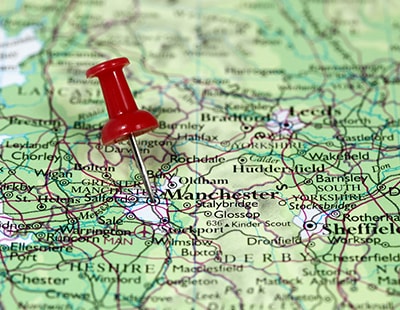Its popularity has risen year-on-year from its introduction in the second quarter of 2013, when 2,103 loans were issued, to the last quarter of 2018, when approximately 15,600 loans were distributed, totalling £1 billion.
In the final quarter of 2018, 63 per cent of all new home buyers in England used the Help to Buy equity loan scheme.
However, the scheme is now coming to a planned close with changes set to be introduced in the next four years.
From 2021, the scheme will be subject to regional maximum value caps, and unavailable to non-FTBs. Cushion & Wakefield claims the caps will create ‘cliff edges’ in areas straddling regions with high and low caps, specifically the borders between the South East, and those of the West and East Midlands.
Cushman & Wakefield has identified 24 local authority areas with new homes markets considered to be potentially worst hit by the 2021 adjustment.
Contributing factors include high levels of non-FTB users with average new home values more than their respective new regional caps. For example, there is an approximate 25-mile stretch of border between the West Midlands and the South East where the new regional cap is 71 per cent higher between the two locations.
This ‘cliff-edge’ risk is greatest in South Northamptonshire in the East Midlands.
With the South East region officially starting on its Southern border, 27 per cent of current new home buyers being non-FTBs, and 82 per cent of recent new home sales being above the new cap level for the East Midlands, the report estimates that from 2021 demand for new homes could drop by between 50 and 60 per cent.
Other areas identified at being as being most at risk include: Rochford, Wychavon, Harlow, Fylde, Daventry, Rushcliffe, Charnwood, Blaby, East Northamptonshire, South Staffordshire, Northampton, Uttlesford, Nuneaton and Bedworth, Exeter, Mid Sussex, Redditch, Kettering, South Ribble, Chorley, Horsham, North West Leicestershire, East Staffordshire and Central Bedfordshire UA.
Lee Layton, from Cushman & Wakefield’s Residential Research team, says: “Despite attracting some controversy regarding artificially inflating prices, there is no doubt that Help to Buy has been a success both in terms of helping people get on the housing ladder, and boosting new home construction rates.
“However, as the scheme begins to be phased-out, there is a real risk that demand for new homes in certain areas will be impacted significantly by its withdrawal, and possible re-financing issues may arise for a growing number of users.
“The success of the scheme has also reinforced the already strong relationship between the national economy and our housing market, with the government effectively purchasing an active stake of 11 per cent in all new homes constructed in 2018. This will be of concern to those who already feel this bond isn’t a particularly healthy one.”


















%20A%20property%20tale%20for%20our%20times.png)








Join the conversation
Jump to latest comment and add your reply
Two statements in the above stand out for me - "....possible re-financing issues may arise for a growing number of users." and "...attracting some controversy regarding artificially inflating prices...". My concern is simply that when you artificially fuel a market there is always going to be an inevitable correction at some point. If demand drops and property prices stagnate then Help to Buy may just create a negative equity crisis for a lot of people!
Please login to comment